One thing we have enjoyed living in New York City is walking through its neighborhoods and boroughs. Along the way we met Keith Michael, who among other things, provides walking tours. We invited him to share his story and introduce you to the walks he hosts. Enjoy!
Seeing the Essentials with New York City WILD!
By Keith Michael
It’s early morning, and a few fall leaves are swirling along the cobblestones as I’m walking my Pembroke Welsh Corgi Millie around “her” block in the West Village neighborhood of Manhattan, New York. I’m looking up, eyes and ears tuned for any birds that might be gorging after a strenuous night migrating from further north. Many of them are still thousands of miles from their ultimate destination in South America, but I’m lucky enough that they have stopped on my street. Millie’s gaze is more concentrated down, hoping to snag an errant French fry or wayward pizza crust lounging on the sidewalk.
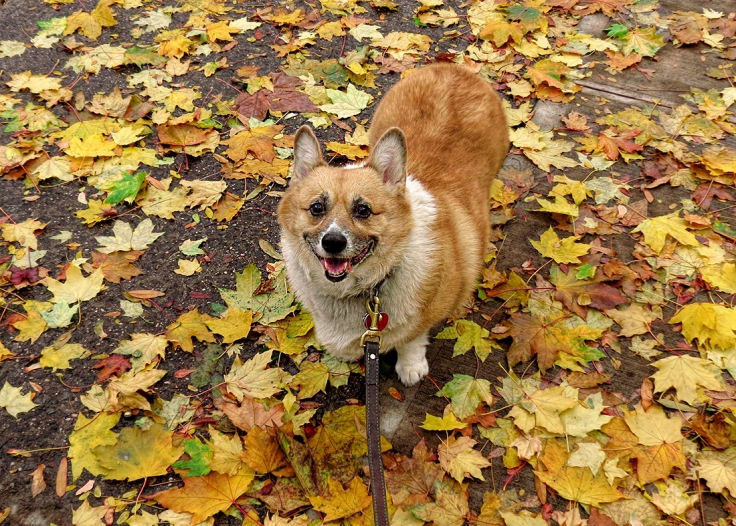
As well as my eclectic life in New York City that includes being a ballet choreographer for New York Theatre Ballet, the full-time Dance Production Coordinator for The Juilliard School, writing monthly birding articles for WestView News: The Voice of the West Village, and being an avid birder and photographer, I also have led hundreds of nature walks around the city as my alter-ego: New York City WILD!
Easing into the fall, I like to revisit the places that I consider my New York City Essentials: walks indulging in important historical/natural/aesthetic/spectacular views of this multi-faceted city that I call home. Adventures await in all five boroughs: Manhattan, Brooklyn, Queens, Staten Island, and The Bronx. Each year my list of Essentials seems to get a little longer. This season there were fifteen different outings.
Earlier in the month, Tip and Jerry joined me on the final one of these ramblings to Flushing Meadows Park and the Queens Museum, which they so eloquently recounted with words and photos in Back to the Future with Keith in their “Tip and JAM in Wonderland” collection of New York tales!
Back inside, Millie’s circling in for her mid-morning nap near my desk, so “here we go” on a whirlwind recounting of the wonderful places I’ve been!
[For an expanded and colorful description of Keith’s walks, keep scrolling beyond the list]
- Central Park, one of the premiere urban achievements of the 19th Century…

- Three midtown Manhattan outings…

3. From the bustle and clichéd crush of quintessential midtown New York City, this walk in Inwood Hill Park, at the far north end of Manhattan, always gives me a palpable feeling…
4 Most New Yorkers know no more about Staten Island than an occasional trip on the ferry…
5. Jamaica Bay Wildlife Refuge, the largest urban national park in the country…
6. The Anniversary of September 11, 2001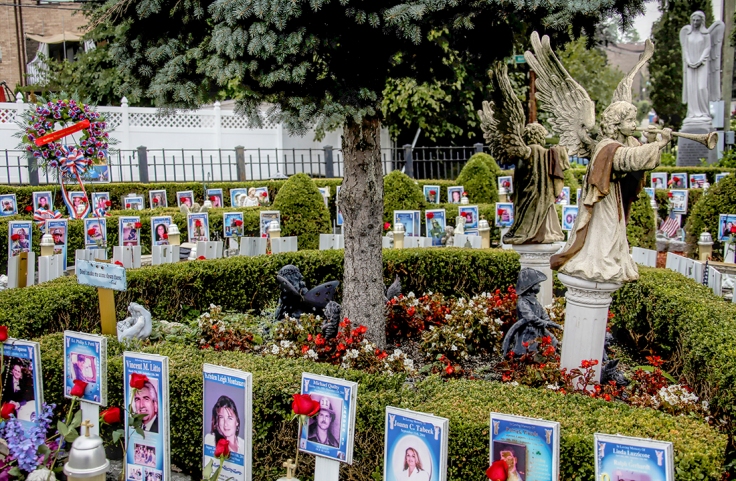
7. Governor’s Island by the light of the silvery moon!
8. Fort Tilden is one of my NYC Essentials because New York City is, at its essence, a “waterworld”!
9. The northern borough of The Bronx!
10. Greenwood Cemetery in Brooklyn is a glorious destination in any season! Built in 1838, this oasis…
11. The next day we visited Brooklyn’s nearby Prospect Park, widely considered as the pinnacle of 19th century romantic landscape design….

12. At last we have reached Walk #12, the final installment of my fall series: Flushing Meadows Park and the Queens Museum…
So, that’s it. Of course, I’ve left out other New York City Essentials such as walking across the Brooklyn Bridge (or walking across all of the East River bridges for that matter), the Empire State Building, Roosevelt Island, Van Cortlandt and Pelham Bay Parks in The Bronx, a host of green jewels of parks on Staten Island, how many other iconic cemeteries in Queens, Dead Horse Bay in Brooklyn, and…don’t get me started.
Come along next time, and let’s see this city together.

Millie (remember her?) just rolled over at my feet, and the old girl slowly climbed up to standing. With a stretch of her back left leg to a flawless arabesque, a yawn, and an imploring stare, I think she’s asking to go out.
Oh, okay. Maybe there’s a rare bird flying down my street.
*.*.*.* *
For more information about New York City WILD! nature outings, birding, photographs, or books, visit www.keithmichaelnyc.com
Follow Keith’s photography on Instagram @newyorkcitywild
Contact him at newyorkcitywild@gmail.com
READ MORE ABOUT KEITHS INTERESTING WALKS:
- Let’s start at the center. Central Park in Manhattan is one of the premiere urban achievements of the 19th Century. I call this walk Central Park: The Whole Thing. Seeing all Central Park in one day is impossible, but… I enjoy trying to connect the dots between many of the places that are simply part of the iconography of the city.
Central Park has a landscape to complement ones every mood. For newcomers, it’s a kind of tasting tour as an introduction, so that one can go back again and again. Forgive the cliché, but Central Park is an urban oasis. Designed, of course, by Frederick Law Olmstead and Calvert Vaux and “premiering” in 1858, it is one of the best birding locations in the United States—more than 280 species have been documented within its 843 acres.
Beginning at Grand Army Plaza in the southeast corner, we walked the southern perimeter of The Pond, through the winding pathways of the recently restored Hallett Nature Sanctuary, across the Gapstow Bridge, past The Dairy and along the Sheep’s Meadow. The magnificent trees of The Mall cooled the air on a warm morning. This is the largest collection of remaining American Elms anywhere in the country after Dutch elm disease began decimating these favored arching street trees in 1928.

The famed Bethesda Fountain, designed by Emma Stebbins, the first woman to receive a public commission for a major work of art in New York City, beckoned us forward with its calming waters, just as Olmstead and Vaux had intended. We skirted by the Lake, crossed over the rightly oft-photographed Bow Bridge, rambled through The Ramble (I didn’t tell anyone that I was slightly lost occasionally), and scrambled by the outcroppings of Manhattan schist upward to Bethesda Castle—you get the picture!
At the Shakespeare Garden, I recounted the story of how in 1890 Eugene Schieffelin, an eccentric drug manufacturer from The Bronx, ceremoniously released 100 European Starlings as a romantic gesture to bring all of the Bard’s avian references to the New World—wow, did he ever! The current millions (billions?) of starlings in North and South America are descendants of that long-ago event in Central Park.
We continued to zig-zag northward, finally resting for lunch in the Conservatory Garden with its English, Italian and French-inspired horticultural designs. Then we wrapped up the afternoon by heading west along the Harlem Meer, meandered through the rustic North Woods and by a Blockhouse from the Revolutionary War, then cooled our hands in the waterfalls of The Loch. Exiting the park at 103rd and Central Park West, if we hadn’t been so tired, I’d have wanted to do it again.

2. I have three Midtown walks that explore …
The first , featuring public spaces, fountains, and waterfalls, explores a different kind of center…: the 42nd Street corridor from Times Square “Crossroads of the World” east to Tudor City with views of the United Nations and East River, ending the evening for dinner at the world-famous Grand Central Oyster Bar. Pricey, yes, a classic, definitely—and what a ceiling! That arched, white-tiled ceiling could be the inspiration for another NYC Essential walk: following the creations of Spanish architect Rafael Guastavino to gawk at the lofty vaulted spaces of Grand Central Terminal, Grant’s Tomb, Carnegie Hall, the American Museum of Natural History, Congregation Emanu-El of New York, St. Bartolomew’s Episcopal Church, and the Cathedral of St. John the Divine! Let’s go!
Making like a tourist, I try to see the City afresh every day with all the wonders and amenities that its public spaces offer—from the “ordinary” to the extraordinary—the sights, smells, and tastes that, living here, we often take for granted. Part of the wonder of Manhattan, for me, is the vast array of public spaces that makes the whole city feel like one’s own backyard (okay, a backyard with hundreds of other people milling about as well!) This was a rambling tour of a host of noteworthy and barely noticed plazas, walkways, decorative fountains, and, yes, waterfalls.
Many people think that exploring nature within New York City is something of an oxymoron. As a self-proclaimed urban naturalist, I like to champion that one doesn’t only have to go to a special nature preserve set aside for “nature” to flourish (though the more sanctuaries like that the better), but that nature is around us all the time. We are wildly affected by the weather, the seasons, and the phases of the moon. Hundreds of species of trees and plants live in every neighborhood, bees swarm, raccoons and skunks scavenge, possibly millions of birds live here, and millions more pass through the city on their annual migrations. Bryant Park, that we walked through right on 42nd Street behind the New York Public Library, has come to be known as a sheltered migrant oasis. Many unusual birds have made their appearances there: Woodcocks probing the mud beside executives eating lunch, a bark-colored Whip-poor-will snoozing on a Plane Tree branch, or even an electric-yellow Prothonotary Warbler singing from the mane of one of the famous lions flanking the front steps of the library on Fifth Avenue.
Midtown Public Spaces, Fountains, and Waterfalls Walk #2”— along the 50th Street corridor from east to west…. This Wednesday evening edition zigzagged from Greenacre Park to Worldwide Plaza. We admired at least seven significant outdoor and indoor waterfall features as well as (oh, how many?) fountains. St. Patrick’s Cathedral, Rockefeller Center, and Radio City Music Hall were in our path. We ended the evening at a local eatery (and met up spontaneously with Tip and Jerry, who we snagged passing by on the street). After all, New York City is just an overgrown small town.
The final of three midtown walks has been a constant surprise. Walking, essentially, the 57th Street corridor west to east—from Columbus Circle to the Queensboro Bridge…, and a host of world-renowned to barely known locations along the way—offers a stunning education in how this city is constantly reinventing itself. The new generation of “super-tall” buildings along this cross street offers an ever-changing drama of what the city has been, what it is, and what it will always be becoming. Many disparage this new crop of skyscrapers as “asparagus buildings” but each represents stunning breakthroughs in construction technology, imagination, and aspiration. We ended the evening at Sutton Place Park, overlooking the churning East River (with some of the fastest tides in the world) and the unsurpassed views of the Queensboro/Ed Koch/59th Street/”Feelin’ Groovy” Bridge. I imagine Frank Sinatra wining and dining on his oh-so-fashionable movie-apartment terrace with this view. I set up my tripod and camera for a long exposure to capture the magic light of the evening. Then, we really ended the evening with dinner at Rosa Mexicana to congratulate ourselves on the stimulating adventures that we had had this summer.
I organized this series of three midtown walks—switch-backing west to east on 42nd Street, then east to west following 50th Street, and, again, west to east along 57th Street—so that, technically, one could do them as an all-day morning/afternoon/evening series bingeing on New York. Maybe next year.
3. From the bustle and clichéd crush of quintessential midtown New York City, this walk in Inwood Hill Park, at the far north end of Manhattan, always gives me a palpable feeling… of what this island might have been like 400 years ago when Henry Hudson’s Half Moon sailed into the New York Harbor, before the island had become the gilded, gridded and bound metropolis that it is now.
We began under the sprawling branches of yet another New York City Great Tree—a magnificent ginkgo—a block from getting off the A Train! (Remember the A Train? The longest subway line in the city—31 miles, 207th Street in Manhattan to Far Rockaway in Queens. We took it to the Jamaica Bay Wildlife Refuge.) Then we headed for Inwood Hill Park. This is a glorious Manhattan forest, with many trees dating from the Revolutionary War: colossal oaks, tulip trees, and another grandfather ginkgo. The traditional site where Mannahatta was purchased in 1626 from the Lenape native Americans is commemorated. Perhaps even more striking than the centuries-old trees is the extreme terrain: rugged cliffs, stone caves, glacial potholes, and serious elevation gain. We snacked on a rocky ledge while enjoying the panoramic views of the New Jersey Palisades, with another NYC Great Tree, a Cottonwood, at our backs. Resident Cardinals, Blue Jays, Chickadees, and Woodpeckers seem like exotics in this very un‑Manhattan‑y northern part of Manhattan. The contrast between this wilderness and the skyscraper-squeezed streets of downtown Manhattan is startling.
Oh, and a Bald Eagle soared by.

4. Probably most New Yorkers know no more about Staten Island than an occasional trip on the ferry with visiting out-of-towners—if that. Staten Island is another world—with more designated parkland than any other borough. On this trip, as well as drinking in the humbling panorama of the world-renowned New York harbor from the Staten Island Ferry, we saw forest, swamps, fresh water ponds, sandy beaches, rocky Atlantic coast, and amazingly, open grasslands. (By the way, if you are visiting New York City, and have time for no other sightseeing, I recommend taking the FREE Staten Island Ferry across the harbor and back—one of the best hours you’ll ever spend!) Starting in the North Mount Loretto State Forest, then proceeding to the sky-full vistas of Mount Loretto Unique Area on Staten Island’s south shore with red bluffs and pebbled beach, the swathes of fall wildflowers—goldenrod, ironweed, joe pye weed, and asters—were starting to “paint the town” in a rainbow of colors. The resident Bald Eagle pair, Vito and Linda, made their expected appearance while we had our picnic on the beach. We did not see their two kids from the summer. Ospreys and Great Egrets made their flyover cameos. On the way back to the train (yes, there’s a Staten Island Railroad that took us to this destination in under an hour), we caught the steeple of the Old Church of St. Joachim and St. Anne (the church used for filming the chilling baptism scene in the original The Godfather movie) across the fields and clusters of trees—we could have been in Provence. But I prefer that we were in New York City.

5. Whoosh! We’re in another borough—maybe a world away: Queens. Jamaica Bay Wildlife Refuge, a unit of the Gateway National Recreation Area (the largest urban national park in the country), across the bay from JFK Airport, has been designated as an Important Bird Area of Global Significance—and right in our backyard. We “Take the A Train” then a bus across Jamaica Bay.
Oh, by the way, a particularly “green” feature of all of my nature walks is that we take public transportation—trains, buses, ferries, maybe an aerial tramway, and, well, walking. Usually in about an hour, often at the end of a subway line, we can be far and away from the concrete and asphalt of most people’s image of NYC.
Here we saw mud flats, salt marsh, upland woodlands, fresh water ponds, and distant vistas of Manhattan, while catching sightings of osprey, geese, ducks, as well as herons and egrets, shorebirds, songbirds, and Peregrine Falcons from the Marine Parkway Bridge. I’ve also seen opossums, raccoons, gargantuan snapping turtles, Barn and Snowy Owls. Diamondback Terrapin sea turtles lay their eggs here. But this is primarily shorebird migration season and JBWR is the best place to see them in the city! The day we were there, the mosquitos were particularly hungry which gave a briskness to our step while ticking off Glossy Ibis, Short-billed Dowitchers, Greater and Lesser Yellowlegs, as well as a smattering of peeps and Semi-palmated Plovers. Surprises did abound.
6. The Anniversary of September 11, 2001 is an essential chapter in New York City history. Memories of that day are likely to be indelible for you, as they certainly are for me. This walk… (and subway and ferry rides) took us on a 12-hour circuit around the New York Harbor to visit the many memorials in both New York and New Jersey dedicated to lives lost that day. The views of the sprawling vistas and the camaraderie of this excursion offered the opportunity for remembrance, introspection and catharsis.
On a personal note, 9/11 cemented my realization that New York City was my home. Having grown up in small towns all over Pennsylvania, I had been uprooted so many times that nowhere “stuck” as my declaration of “where I was from.” Going through the bonding trauma in the aftermath of that day, and the stunning realization of what had been lost in seconds, brought me to understand what “home” means. NYC, now, is where I am from. NYC is home.

This was a marathon day. Any one of these destinations was worthy of an entire excursion. We started by taking the Staten Island Ferry to St. George to view the Postcards Memorial (and the Bayonne, NJ Teardrop Memorial along the way), then a bus to the Angel Circle, another poignant reminder of all of Staten Island’s personal losses in an instant. Back to Manhattan with the new One World Trade Center always dominating the skyline, a stop at the Queen Elizabeth II 9/11 Memorial Garden commemorating all of those lost from the British Empire. Then a walk through Battery Park, and continuing north along the waterfront, entering Brookfield Place for the somber American Express Memorial, through Santiago Calatrava’s gleaming passageway to the National September 11 Memorial Pools, past Fritz Koenig’s Sphere in Liberty Park, and, finally, across Broadway to Seward Johnson’s Double Check, his everyman sculpture of a lunch-time businessman checking figures on a calculator in his briefcase, in Zuccotti Park (which has a poignant companion doppelganger that we saw later along the waterfront in Jersey City).
The next portion of this pilgrimage took us to the parade of memorials in New Jersey. After taking the ferry to Liberty State Park, the stainless-steel walls of Empty Sky confronted us with just that—empty sky—looking across the Hudson River to the blank space where the twin towers once stood, and the new construction that now dominates the still-wounded skyline. We walked the promenade in a melancholia for the lost view, then took the short ferry to Warren Street, Exchange Place for the Jersey City memorial, rushed up to Port Imperial on the Light Rail to view the annual remembrance ceremony at the Weehawken Memorial with its WTC steel trident silhouetted against the darkening sky, then returned to Hoboken to view the glowing glass shards of that memorial. As dusk deepened into night, we eased into watching the Tribute in Light reveal itself within the stunning spectacle of the New York City skyline.
The mesmerizing infinity beams of the Tribute in Light now hold an added poignance each year as 1,000s of migrating birds get caught in the blinding columns, circling and circling. In the first years of the annual memorial, they often flew to their deaths, but now New York City Audubon monitors the beams. The pillars of light stretching skyward are doused when the number of trapped birds reaches a critical mass, so that the birds may escape safely and continue on their life-sustaining way.
It was a marathon tribute to that unforgettable day.

7. We took advantage of the last night of the summer that Governor’s Island was open late, so that we could take the last ferry back to Manhattan at 10:00 pm by the light of the silvery moon!
This island in New York Harbor…, five minutes from downtown Manhattan, has a rich history, and will continue to do so as it is transformed into full recreational NYC parkland by the Dutch design firm West 8. Called Noten Eylant (Nut Island) by Dutch settlers for its preponderance of nut trees, the island was later a military stronghold with two forts: Fort Jay (1798) and Castle Williams (1811). Governor’s Island is also a natural magnet for north- and south-bound migrating birds along the Atlantic Flyway, and, in the summer months, boasts a rare up-close-and-personal view of a nesting colony of Common Terns (a threatened species in New York State) that have set up housekeeping on the decommissioned piers on the east side of the island. Terns from this colony have been banded and discovered to migrate to southern Argentina, a journey of 8,000 miles one-way (!), pairs returning to nest again within ten feet of their nest site the previous summer. Ponder that.
Last summer the island had two Yellow-crowned Heron nests as well. We saw a bat helping to decrease the mosquito population, and an unexpected American Oystercatcher screaming through the night. Oh, and if you didn’t know, there are fantastic views of lower Manhattan, Lady Liberty and the panorama of the New York Harbor. We enjoyed our picnic dinner “on the hills” with the 360° of New York City wrapped around us.

8. Fort Tilden is one of my NYC Essentials because New York City is, at its essence, a “waterworld”! Here we see the vastness of the Atlantic Ocean that spreads before us—the challenge for early settlers… who arrived on these shores and founded a New World. Fort Tilden is nestled on the Rockaway Peninsula of Queens between Robert Moses’ Jacob Riis Park and the community of Breezy Point. A former coastal United States Army installation, the fort ended its military service as a Nike missile site. Now another part of the Gateway National Recreation Area, this still relatively secluded New York beach attracts nesting Piping Plovers (a globally endangered species), and Black Skimmers, Common and Least Terns (all threatened species in New York State) during the summer. There was still a handful of lingering shorebirds, but the day was remarkably un-birdy. The wintering loons and sea ducks had still not arrived, the resident Peregrine Falcons from the Marine Parkway Bridge didn’t make an appearance, and there was barely even a gull loafing on the beach. We passed the haunting ruins of World War II garrisons, passed through an underground graffiti-clad munitions storage bunker, and this time, ate our picnic lunch atop the lofty pinnacle of the hawk watch platform with soaring views of Brooklyn, Queens, Staten Island, Sandy Hook NJ, and Manhattan. Thrilling. Magical.
9. At last we got to visit the northern borough of The Bronx! I hope to visit Woodlawn Cemetery twice this fall: once in this last gasp of summer greenery and later in November with the design of catching spectacular fall foliage… (the intense red of the Japanese Maples there is particularly beguiling). Immediately after we got off at the last stop of the uptown #4 train, we entered this magnificent garden cemetery, established in 1863. In 2011, Woodlawn was designated a National Historic Landmark distinguished by memorials that “represent the largest and finest collection of funerary art in the country.” Oh my, that is an understatement. All I can say is, if you can, “Just go!” Woodlawn is also home to five official New York City Great Trees—a White Pine, a Cut-leaf Beech, an Umbrella Pine, an encompassing Weeping Beech, and a magnificent spreading White Oak, most likely pre-dating the cemetery—as well as a seemingly endless supply of runners up! This is a haven for birds (a flock of Wild Turkeys has been spotted) and the weathervane of the Woolworth Memorial Chapel is a favored lookout for the resident Red-tailed Hawks. The interred residents here are a Who’s Who of American fame and fortune: Henry H. Westinghouse, Augustus Juilliard, Admiral David Farragut, Fiorello La Guardia, Herman Melville, Duke Ellington, Joseph Pulitzer, and on and on and on. The mausoleums, the sculpture, the arboretum, the history: there is never enough time to spend here.
10. Greenwood Cemetery in Brooklyn is a glorious destination in any season! Built in 1838, this oasis… was the premiere tourist destination of its time, even nudging out Niagara Falls, and it was one of the bucolic inspirations for Vaux and Olmstead’s Central Park and Prospect Park. An oft-repeated quote from the New York Times in 1866 might be true for many New Yorkers today: “It is the ambition of the New Yorker to live upon Fifth Avenue, to take his airings in [Central] Park, and to sleep with his fathers in Green-Wood.” Green-Wood welcomes us with its famed neo-gothic entrance, housing the avian allure of a raucous colony of Monk Parakeets! The story of how these green-and-gray parrots arrived from their native Argentina is an engaging bit of urban folklore. We could wander for days through this lush arboretum, marveling at the extravagance of the monuments and mausoleums. One required pilgrimage is to climb Battle Hill, scene of the Battle of Brooklyn (or Long Island), an early victory for the British in our Revolutionary War. The story of George Washington and his troops’ fog-shrouded escape across the East River is a dramatic military rout, commemorated by F. Wellington Ruxell’s imposing Minerva sculpture, saluting in homage to Lady Liberty out in the harbor.
11. The next day we visited Brooklyn’s nearby Prospect Park, widely considered as the pinnacle of 19th century romantic landscape design…. Even its illustrious designers themselves, Frederick Law Olmstead and Calvert Vaux, championed the park as a greater success than their own triumph: Central Park in Manhattan. Created between 1866 and 1873, the engineering and landscaping were revolutionary. All of the waterways and lakes of the park are man-made. We began this adventure underneath the Soldier’ and Sailors’ Triumphal Arch in the middle of Brooklyn’s Grand Army Plaza. Heading south and entering Prospect Park, we passed under the Endale Arch for the epitome of Vaux and Olmstead’s genius—the magical transition to the greensward of Long Meadow—leaving the city far behind. We continued along Long Meadow, taking in highlights (among many others) such as Fallkill Falls, the Ravine, the Lullwater, the Nethermead Lawn, Lookout Hill, and Prospect Park Lake. Swatches of fall color were starting to dominate the green, and, of course, we saw another smattering of NYC Great Trees.
So much to see.

- At last we have reached Walk #12, the final installment of my fall series: Flushing Meadows Park and the Queens Museum… Quite frankly, I would have preferred to start my NYC Wild! Essentials with this extraordinary destination for an overview of the vast city available to explore— but, unfortunately, the Queens Museum is closed during the US Open for tennis-mania at the beginning of September! So, we used this destination as an overview of the places we had been, rather than as an enticing introduction to all the places that we had yet to go.
After a ride on the #7 train from Times Square (the above-ground passage through Long Island City, offering up a jaw-dropping journey through the proliferation of outer-borough skyscrapers that are shooting up), this walk took us to my introduction to The City: the site of the 1964-65 World’s Fair in Flushing Meadows, Queens. Most of the stupendous “visions of the future” (that we are now living in) from the fair are gone, but the iconic Unisphere, the contemporary ruin of the New York State Pavilion designed by Philip Johnson, and the Queens Museum (the original location of the nascent United Nations) remain. Our primary (indoor) pilgrimage was to the Queens Museum which houses an exhibit that was created for the World’s Fair: a model of the City of New York! This is better than going to the top of any iconic NYC skyscraper, better than a helicopter ride, better than a flight out of JFK! The size of a skating rink, this three-dimensional model, represented EVERY building in New York in 1964, in every borough, on every street. The chance to leisurely walk and gawk around the suspended walkway, getting an eagles’ eye view of the complexity of the city, is worth visiting again and again.
Seeing this as a seven-year old changed my life—instilling dreams of the wonders that could be possible. Oh, how I would love to see it for the first time again!
Keith is our first guest writer. We thought you might enjoy the descriptions of his wanderings in NYC. You can join Keith on one of his walks, follow him on instragram, @newyorkcitywild, or contact him about joining one of his NYC Wild walks: newyorkcitywild@gmail.com
Thanks Keith!
All photos by Keith Michael, except where otherwise noted.


















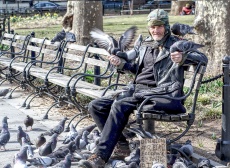



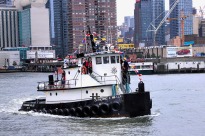


















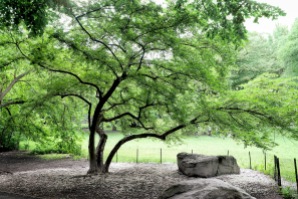












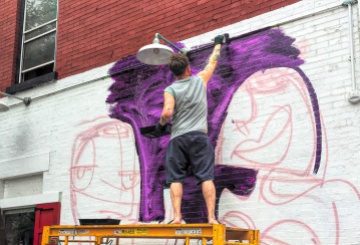




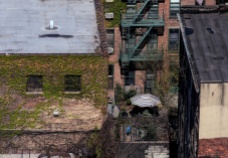









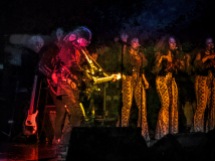
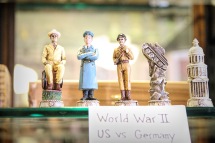













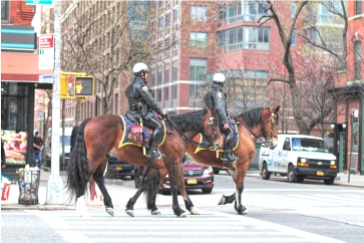






































![2018 0104 IMG_6989[1] snow 2018 0104 IMG_6989[1] snow](https://tipandjaminwonderland.files.wordpress.com/2018/01/2018-0104-img_69891-snow.jpg?w=272&resize=272%2C204#038;h=204)








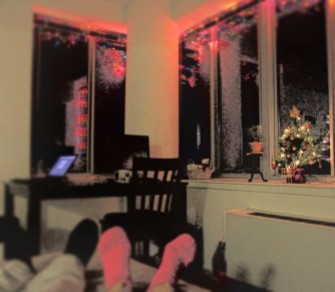






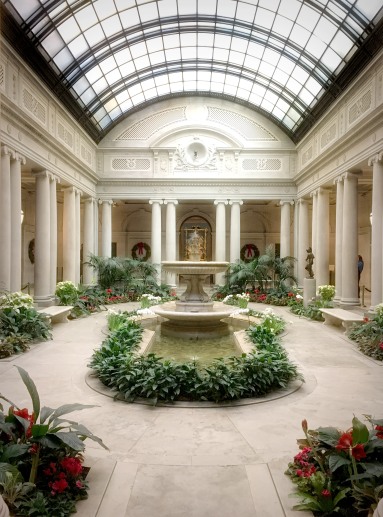














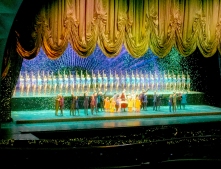












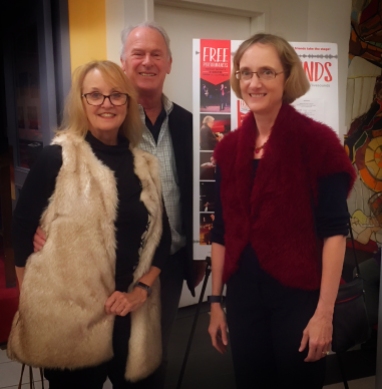




































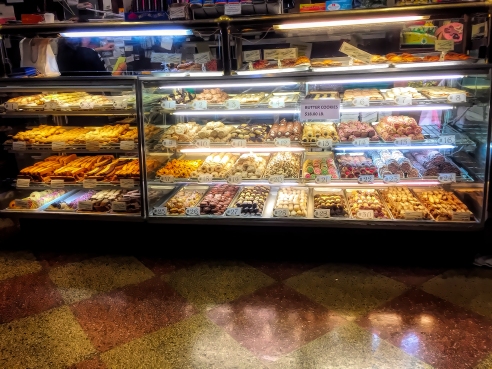




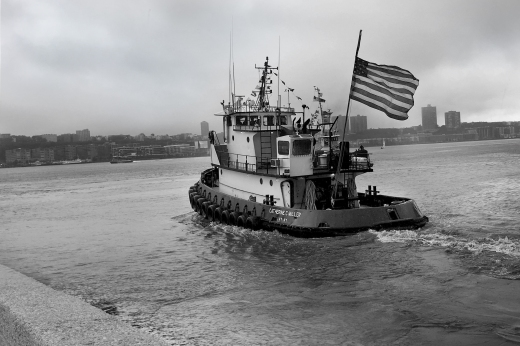








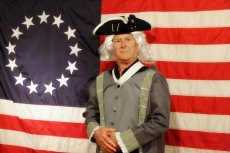
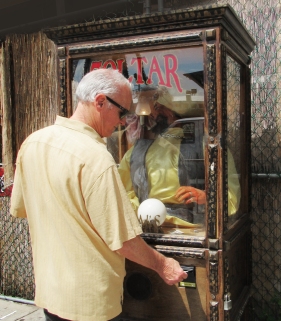












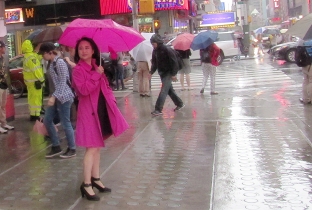






































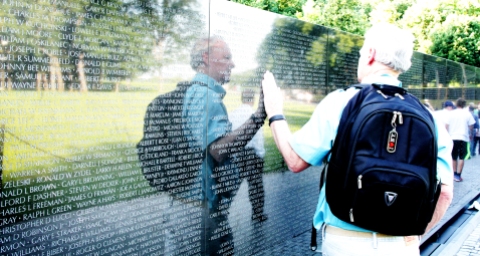











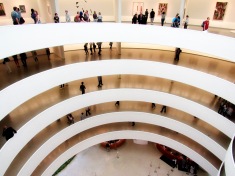
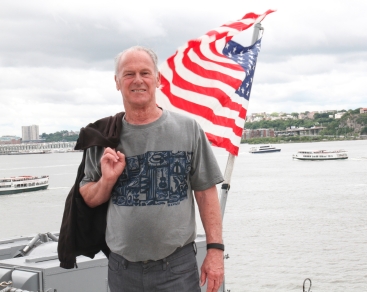














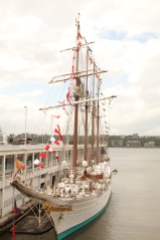
































This is so interesting! I appreciate Keith’s perspective on NYC. I will keep many of these essentials in mind when I visit!
LikeLiked by 2 people
We really appreciate Keith’s contribution. Glad you enjoyed his insights!
LikeLike
Might you guys blog about DFW? No one wants to lose your writing and photos. You leaving NYC doesn’t make me sad, but thinking this will end does.
LikeLiked by 1 person
Stay tuned!
LikeLiked by 1 person
I might’ve missed something, but I await with anticipation!!!
LikeLiked by 2 people
What a gem in so many ways – his writing, his perspectives, his DOG, his knowledge and insights, his friendship with you. Wonderful. Nice. A blessing. 😘. J
LikeLiked by 2 people